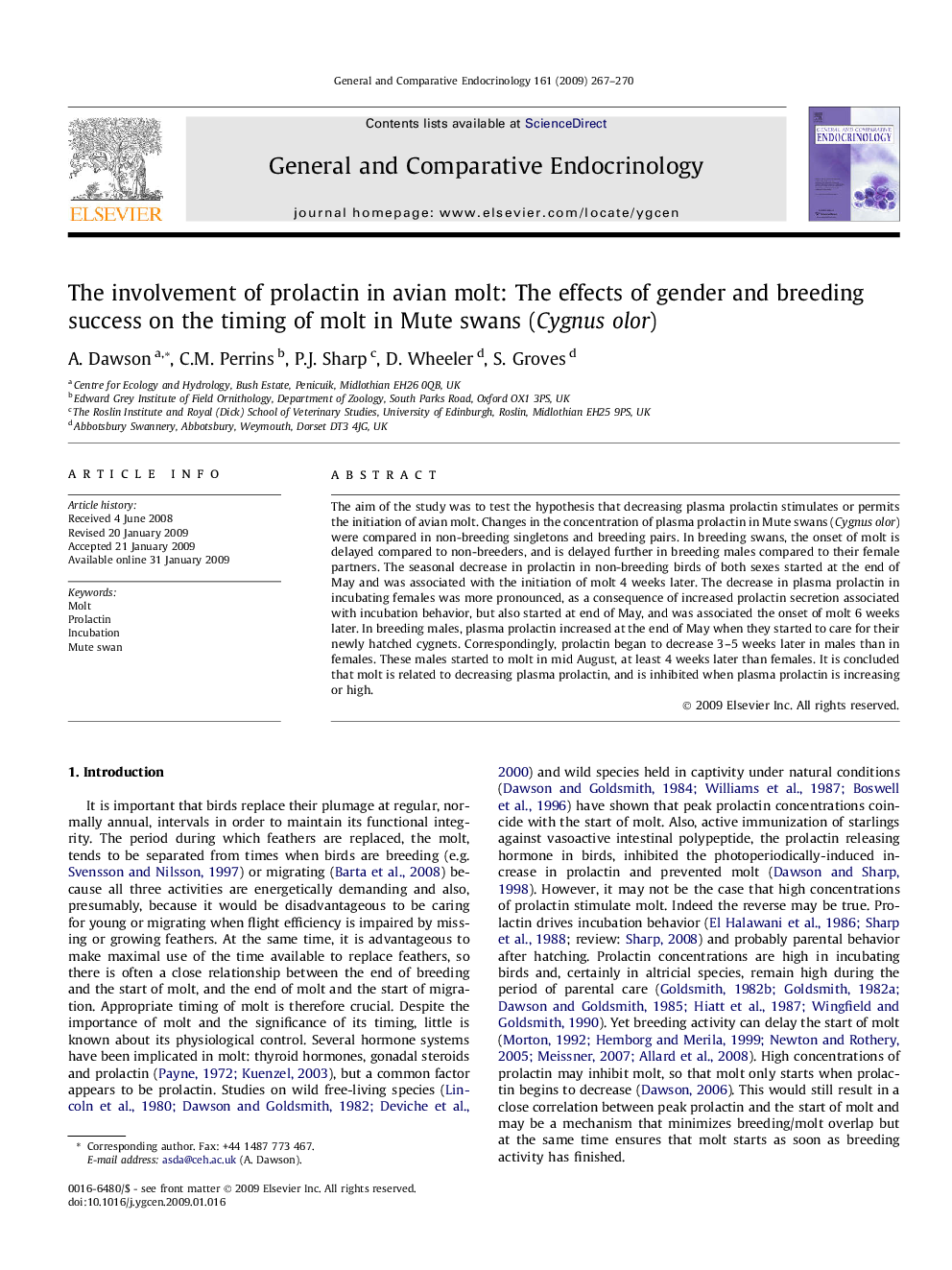| Article ID | Journal | Published Year | Pages | File Type |
|---|---|---|---|---|
| 2801313 | General and Comparative Endocrinology | 2009 | 4 Pages |
Abstract
The aim of the study was to test the hypothesis that decreasing plasma prolactin stimulates or permits the initiation of avian molt. Changes in the concentration of plasma prolactin in Mute swans (Cygnus olor) were compared in non-breeding singletons and breeding pairs. In breeding swans, the onset of molt is delayed compared to non-breeders, and is delayed further in breeding males compared to their female partners. The seasonal decrease in prolactin in non-breeding birds of both sexes started at the end of May and was associated with the initiation of molt 4 weeks later. The decrease in plasma prolactin in incubating females was more pronounced, as a consequence of increased prolactin secretion associated with incubation behavior, but also started at end of May, and was associated the onset of molt 6 weeks later. In breeding males, plasma prolactin increased at the end of May when they started to care for their newly hatched cygnets. Correspondingly, prolactin began to decrease 3-5 weeks later in males than in females. These males started to molt in mid August, at least 4 weeks later than females. It is concluded that molt is related to decreasing plasma prolactin, and is inhibited when plasma prolactin is increasing or high.
Keywords
Related Topics
Life Sciences
Biochemistry, Genetics and Molecular Biology
Endocrinology
Authors
A. Dawson, C.M. Perrins, P.J. Sharp, D. Wheeler, S. Groves,
